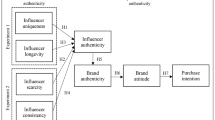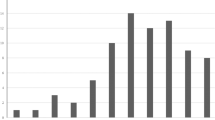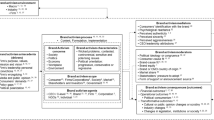Abstract
The aim of this paper is to analyse the economic efficiency of members of protected designations of origin (PDO). For the first time we analyse the value of PDO labels from the point of view of economic efficiency. The central hypothesis is that a PDO has a positive impact on the economic efficiency of its member companies and that this is because a PDO label is a collective reputation indicator that foments efficient investment in quality in terms of member returns. The methodology applied to test this hypothesis is based on data envelopment analysis to estimate economic efficiency, and econometric models to explain company efficiency through both the PDO label, as an indicator of collective reputation, and the characteristics of the company. The results obtained in the experience goods of wine and cheese in Spain show that PDO labels have a positive impact on economic efficiency. Additionally, the age and size of the company have a positive effect while the wage level of the company has a different influence on efficiency depending on the sector considered. Overall, the results reveal the importance of PDOs in industries in which the signal of reputation is not only reliant on the individual brands.
Similar content being viewed by others
Notes
An earlier theoretical specification, collected in the incomplete information model (see Rosen 1974), assumes that consumers have access to low-cost or free information on the current quality of a product.
Another theoretical position, which has not been empirically analysed, holds that the members of a public collective label, such as PDO, can be more inefficient than members of a private collective label due to their higher variable production costs (Bouamra-Mechemache and Chaaban 2010). Basically, public labels are governed by a different set of legislation and limitations to guarantee a certain quality; for example, regulation induces technology constraints linked to a specific processing requirement and production area. In contrast, companies in a private collective labelling scheme can improve their efficiency as they have less stringent technical and capacity requirements, which entail lower variable production costs.
Our hypothesis follows the theoretical assumption that reputation plays an important role in assuring product quality in markets where consumers can only imperfectly judge the product quality after consumption. Thus, if reputation effects are absent in these markets, producers have incentives to reduce quality to make short terms gains; that is, a declining trend in reputation gives producers a license to free-ride on the collective reputation. However, to avoid this reduction in quality, products with a good reputation are sold with a price premium (Quagrainie et al. 2003); in fact, Shapiro (1983) showed theoretically that price premiums are needed for producers to invest in quality and reputation.
Alternatively, the theoretical position of Fishman et al. (2008) holds that if the consumers’ perception of quality of a collective brand is determined by their experience of the quality of different members of the brand and if the supply of high quality requires high investment, members may have the incentive to adopt a free-riding attitude to the investments of the other members of the collective brand. In fact, if the costs are sustained by all the producers but incomes are shared amongst the members according to the quantity produced, with no regular controls or minimum quality standards, some companies can be led away from the path of virtue and reduce quality in order to minimise costs and maximise profits (Castriota and Delmastro 2008). In this way, “free-riding” can be affected by the number of companies and the production volume of the collective brand: when the number of member companies is not large, it is possible to perfectly track the investments of the members and identify members that do not invest, thus impeding “free riding”. And as the production volume increases in the collective brand so does the collective reputation effect (as the number of units whose quality is observed by consumers increases) and the incentives to invest, eliminating the incentive to free ride.
Lack of information on cheese quality in Spain impedes the comparative analysis of average quality of PDO companies and the average quality of non-PDO companies.
References
Aaker DA (1991) Managing brand equity: capitalizing on the value of a brand name. The Free Press, New York
Akerlof GA (1970) The market for lemons: quality uncertainty and the market mechanism. Q J Econ 84(3):488–500
Allen F (1984) Reputation and product quality. Rand J Econ 15:311–327
Banker RD, Charnes A, Cooper WW (1984) Some models for estimating technical and scale inefficiencies in data envelopment analysis. Manag Sci 30(9):1078–1092
Bouamra-Mechemache Z, Chaaban J (2010) Protected designation of origin revisited. J Agric Food Ind Organ 8:1–27
Bravo-Ureta B, Solís D, Moreira-López VH, Maripini JF, Thiam A, Rivas T (2007) Technical efficiency in farming: a meta-regression analysis. J Prod Anal 27:57–72
Bucklin LP (1978) Productivity in marketing. A.M.A, Chicago
Cambra J, Villafuerte A (2009) Denominaciones de origen e indicaciones geográficas. Justificación de su empleo y valoración de su situación actual en España, Mediterráneo Económico 15:329–350
Castriota S, Delmastro M (2008) Individual and collective reputation: lessons from the wine market. Working paper 30, American Association of Wine Economists
Castriota S, Delmastro M (2009) The economics of collective reputation: minimum quality standards, vertical differentiation and optimal group size. Working paper, 50, American Association of Wine Economists
Charnes A, Cooper WW, Rhodes E (1978) Measuring the efficiency of decision making units. Eur J Oper Res 2:429–444
Charnes A, Cooper WW, Rhodes E (1981) Evaluating program and managerial efficiency: an application of data envelopment analysis to program follow through. Manag Sci 27(6):668–697
Díaz I (2011) Denominaciones de origen e indicaciones geográficas como garantía de calidad, Distribución y Consumo, mayo–junio, pp 5–21
Donthu N, Yoo B (1998) Retail productivity assessment using data envelopment analysis. J Retail 74(1):89–105
Doutt JT (1984) Comparative productivity performance in fast-food retail distribution. J Retail 60:98–106
Erdem T, Swait J (1998) Brand equity as a signalling phenomenon. J Consum Psychol 7(2):131–157
Erdem T, Swait J, Broniarczyk S, Chakravarti D, Kapferer JN, Keane M, Roberts J, Steenkamp JB, Zettelmeyer F (1999) Brand equity, consumer learning and choice. Mark Lett 10(3):301–318
Fernández-Barcala M, González-Díaz M (2006) Brand equity in the European fruit and vegetable sector: a transaction cost approach. Int J Res Mark 23:31–44
Fishman A, Finkelshtain I, Simhon A, Yacouel N (2008) The economics of collective brands. Discussion paper 14.08, The Hebrew University of Jerusalem
Fombrun C, Shanley M (1990) What’s in a name? Reputation building and corporate strategy. Acad Manag J 33(2):233–258
Frutos L, Ruiz E (2012) Los quesos con indicación geográfica: Su importancia en el Sistema agroalimentario local. In: Frutos L, Ruiz E (eds) Los productos con indicación geográfica en el sistema agroalimentario español. Tradición y modernidad, IFC, Zaragoza, pp 73–98
Gómez-Mejía LR, Balkin DB (1992) Compensation, organizational strategy, and firm performance. South-Western, Cincinnati
Hoff A (2007) Second stage DEA: comparison of approaches for modelling the DEA score. Eur J Oper Res 181:425–435
Ingene CA (1982) Labor productivity in retailing. J Mark 46(4):75–90
Jensen MC, Meckling WC (1976) Theory of the firm: managerial behavior, agency costs and ownership structure. J Financ Econ 3:305–360
Jin GZ, Leslie P (2009) Reputational incentives for restaurant hygiene. Am Econ J Microecon 1(1):237–267
Klein B, Leffler KB (1981) The role of market forces in assuring contractual performance. J Polit Econ 89(4):615–641
Kreps DM, Wilson R (1982) Reputation and imperfect information. J Econ Theory 27:253–279
Kreps DM, Milgrom PR, Roberts J, Wilson RJ (1982) Rational cooperation in the finitely repeated prisoner’s dilemma. J Econ Theory 27(2):245–252
Landon S, Smith CE (1997) The use of quality and reputation indicators by consumers: the case of Bordeaux wine. J Consum Policy 20(3):289–323
Landon S, Smith CE (1998) Quality expectations, reputation, and price. South Econ J 64(3):628–647
Loureiro ML, McCluskey JJ (2000) Assessing consumer response to protected geographical identification labelling. Agribusiness 16(3):309–320
Lusch RF, Serpkenci RR (1990) Personal differences, job tension, job outcomes and store performance: a study of retail store managers. J Mark 54(1):85–101
MMAMRM (2009) Datos de los vinos de calidad producidos en regiones determinadas (V.C.P.R.D.) Campaña 2008/2009, Secretaría General de Medio Rural. Ministerio de Medio Ambiente y Medio Rural y Marino, Madrid
Nayyar PR (1990) Information asymmetries: a source of competitive advantage for diversified service firms. Strateg Manag J 11:513–519
Pilling BK, Henson SW, Yoo B (1995) Competition among franchises, company-owned units and independent operations: a population ecology application. J Mark Channels 4(1):177–195
Quagrainie KK, McCluskey JJ, Loureiro ML (2003) A latent structure approach to measuring reputation. South Econ J 69(4):966–977
Ratchford BT, Stoops GT (1988) A model and measurement approach for studying retail productivity. J Retail 64:241–263
Rob R, Fishman A (2005) Is bigger better? Customer base expansion through word-of-mouth reputation. J Polit Econ 113(5):1146–1162
Roberts P, Reagans R (2007) Critical exposure and price-quality relationships for new world wines in the U.S. market. J Wine Econ 2(1):56–69
Rogerson WP (1987) The dissipation of profits by brand name investment and entry when price guarantees quality. J Polit Econ 95:797–809
Rosen WP (1974) Hedonic prices and implicit markets: product differentiation in pure competition. J Polit Econ 82:34–55
Sánchez G, Aragón A (2002) Retribución del directivo, factores contextuales y resultados de la empresa: evidencia empírica en el sector químico-farmacéutico. Cuad Econ Direcc Emp 12:315–336
Sánchez G, Aragón A (2003) Top managers’ compensation, strategic orientations, and firm performance: empirical evidence from Spanish firms. Manag Res 1(1):27–44
Sanz M (1995) Los quesos con denominación de origen frente a la moderna distribución comercial, Distribución y Consumo, agosto/septiembre, pp 120–123
Schamel G (2000) Individual and collective reputation indicators of wine quality. Discussion paper 9, University of Adelaide
Schulze WS, Lubatkin MH, Dino RN, Buchholtz AK (2001) Agency relationships in family firms: theory and evidence. Organ Sci 12(2):99–116
Shapiro S (1983) Premium for high quality products as returns to reputation. Q J Econ 98:660–679
Smith D, Park C (1992) The effects of brand extensions on market share and advertising efficiency. J Mark Res 29(3):296–313
Thomas RR, Barr RS, Cron WL, Slocum JW Jr (1998) A process for evaluating retail store efficiency: a restricted DEA approach. Int J Res Mark 15(5):487–503
Tirole J (1988) The theory of industrial organization. Massachusetts Institute of Technology, Boston
Tirole J (1996) A theory of collective reputation (with application to corruption and firm quality). Rev Econ Stud 63:1–22
Tosi HL, Gómez-Mejía LR (1994) Compensation monitoring and firm performance. Acad Manag J 37:1002–1016
Viviani JL (2008) Capital structure determinants: an empirical study of French companies in the wine industry. Int J Wine Bus Res 20(2):171–194
Winfree JA, McCluskey J (2005) Collective reputation and quality. Am J Agric Econ 87(1):206–213
Yoo B, Donthu N, Pilling BK (1997) Channel efficiency: franchise versus non-franchise systems. J Mark Channels 6(3/4):1–15
Zhu J (2000) Multi-factor performance measure model with an application to Fortune 500 companies. Eur J Oper Res 123:105–124
Author information
Authors and Affiliations
Corresponding author
Rights and permissions
About this article
Cite this article
Sellers-Rubio, R., Más-Ruiz, F.J. Economic efficiency of members of protected designations of origin: sharing reputation indicators in the experience goods of wine and cheese. Rev Manag Sci 9, 175–196 (2015). https://doi.org/10.1007/s11846-014-0124-x
Received:
Accepted:
Published:
Issue Date:
DOI: https://doi.org/10.1007/s11846-014-0124-x




